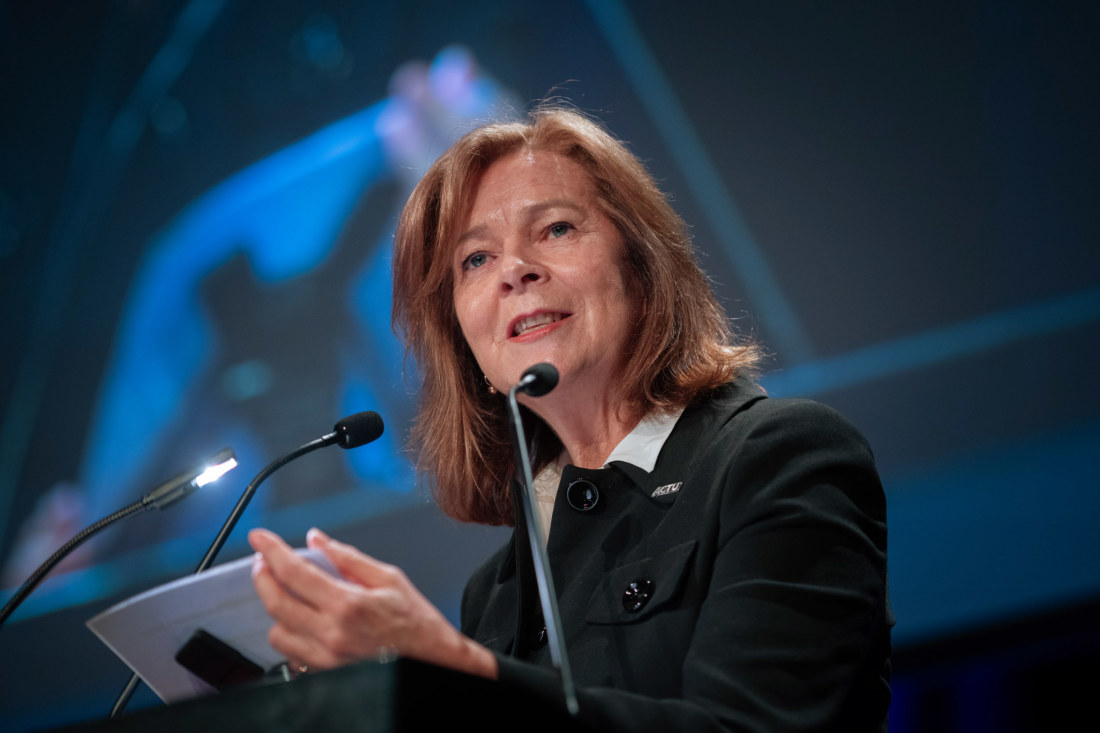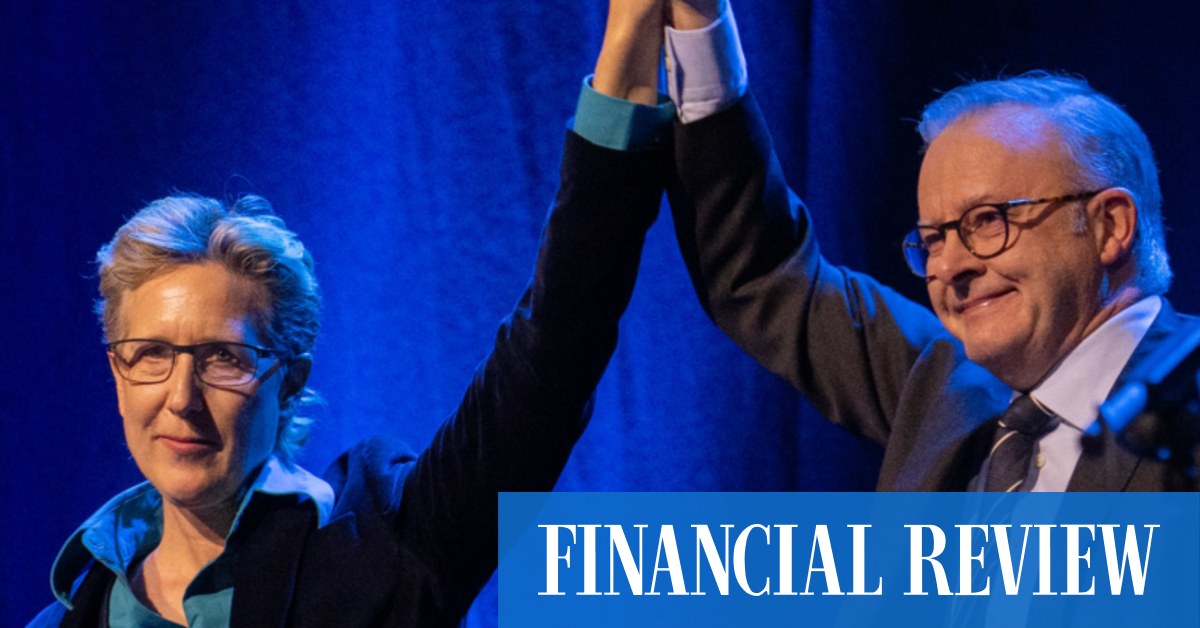Regulation of artificial intelligence, a just transition for workers to green energy industries with “good union jobs”, shorter working hours and five weeks’ annual leave for all workers were among the priorities unions will campaign on for the next three years.
In her opening speech to congress, McManus stressed the debt that unions owe Labor for pushing through its workplace reforms.
“They have kept their word to the Australian people – delegates, we must never forget this Labor government did not walk away when things got tough.”
Since former Labor leader Bill Shorten’s shock loss in 2019, the union movement has buckled down to avoid divisions and maintain political discipline.
ACTU secretary Sally McManus warned unions “we must watch our backs”. Ben Searcy
A new ACTU policy pushing for a strong emission reduction target by 2035 gave Labor flexibility by not putting a figure on it. Flashpoints such as AUKUS did not make it to the congress floor.
Asked whether Albanese should be stronger on Gaza, one senior Left union leader recognised that the prime minister needed to offer voters “surety, consistency”.
Elephant in the room
The congress shows one of the key contradictions in the union movement. While unions are politically strong, they are industrially small. Through deep connections with Labor, formidable campaigning resources and donations, and a swath of legislative rights, they extend their influence far beyond their 12.5 per cent membership in the economy – or just 8 per cent in the private sector.
But now that unions are operating in what McManus called “an environment that is more favourable than we have had for decades”, the elephant in the room can no longer be ignored.
“We must see our movement grow again,” McManus declared to congress. “Australians depend on the trade union movement for their living standards. But let’s face it, 15 per cent cannot carry 100 per cent.”
McManus urged unions to use Labor’s new laws to address the membership rout and “redouble our organising efforts”. One key to that is multi-employer bargaining.
The Collieries Staff and Officials Association told congress workshops that its membership had increased 40 per cent among critical mine supervisors after it targeted miners for multi-employer bargaining.
Independent Education Union secretary Brad Hayes said multi-employer bargaining meant the union could “free up single-site resources to focus on thousands of free riders that continue to benefit from our agreements”.
The Australian Manufacturing Workers’ Union, which negotiated the first multi-employer agreement with air-conditioning manufacturers, is already looking for further deals at other sectors, while the Shop Distributive and Allied Employees Association (SDA) is considering wrangling fast-food franchises into one agreement rather than negotiating store by store.
Responding to the multi-employer bargaining focus at congress, Herbert Smith Freehills IR partner Rohan Doyle said “it may be that employers will need to get familiar with this new regime very quickly”.
‘Fields for combative class warfare’
Australian Industry Group chief executive Innes Willox said the celebration of Labor’s “cumbersome and costly” IR laws was galling for struggling businesses and argued the laws were about giving unions a “raft of new ways to impose themselves on workplaces”.
“Sadly, the focus of union leaders on growing union membership rather than growing the economy won’t be a shock to many,” Willox said.
“Union membership has dwindled because they do not talk for most working Australians who want their workplaces to be successful and harmonious rather than fields for combative class warfare.”
However, while representation may be low, union leaders at the congress were filled with optimism about their new-found position at the top after years of defending themselves.
Electrical Trades Union national secretary Michael Wright said: “I think we all know the union movement numerically is not what we once were. But if we look back at this time, this is where the change starts, this is where we turn the tide.”
In the rocky world of industrial relations, where the policy pendulum swings from one extreme to the other depending on who’s in power, some unions can finally hold out hope for stability.

ACTU president Michele O’Neil was re-elected for another three years. Ben Searcy
After a decade of churning through leaders since Greg Combet resigned as ACTU secretary in 2007, McManus – who took the reins in 2017 and was re-elected this week for three more years – is now the longest-serving ACTU secretary since Bill Kelty retired in 2000.
Union leaders are also hopeful for Albanese’s chances at re-election. Focus groups show that voters recognise that wages are rising under Labor, even if they’re still concerned about interest rates and cost of living.
Australasian Meat Industry Employees Union secretary Matt Journeaux, from the Left, said there was strong support for the prime minister among unions and beyond.
“I speak with people on the other side of politics and ask what his shortcomings are, and the list is very short,” he said.
But there is always the fear that it could all be taken away again.
The movement is “finally climbing that mountain”, as McManus put it. Yet the ACTU secretary warned delegates that “we must also watch our backs”.
“We will need to protect what we have won. Big business will not want to see these laws come alive. They want to take them away before we have a chance to use them, before they are embedded, before Australian workers see their full benefits.”
For some unions, it is still all political. Australian Workers’ Union national secretary Paul Farrow was explicit, saying the threat to the worker was “not AI, not automation – it’s politics”.
“It’s not the tides themselves we should worry about, but rather who has the wheel,” he said.

